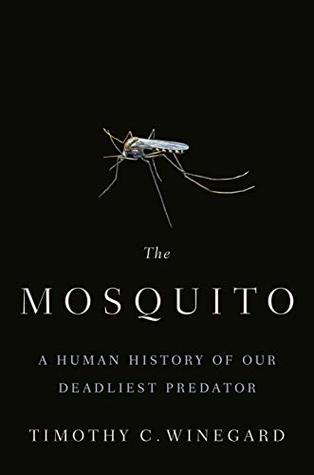More on this book
Community
Kindle Notes & Highlights
Read between
April 3 - April 12, 2020
This chronic malarial snowball effect was a direct catalyst for the decline and fall of the Roman Empire.
In her chapter “A Gospel Amulet for Joannia” in the book Daughters of Hecate: Women and Magic in the Ancient World,
St. Peter’s Basilica in 1626 (designed by Michelangelo, Bernini, and others),
The Black Death, in a league of its own, is the single most shattering individual Malthusian check in human history.
Antony Wild in his book Coffee: A Dark History.
William Ukers advocated in his 1922 book, All about Coffee, “Wherever it has been introduced it has spelled revolution. It has been the world’s most radical drink in that its function has always been to make people think. And when the people began to think, they became dangerous to tyrants.”
Prior to the American Revolution, there were at least thirty major yellow fever epidemics in the British North American colonies, striking every major urban center and port on the 1,000-mile stretch of seaboard from Nova Scotia to Georgia.
New Orleans, Charleston, Philadelphia, Boston, New York, and Memphis head a lengthy list of American cities that would experience deadly yellow fever epidemics. In fact, these were the most lethal epidemics of any disease in American history. The epidemics, coupled with chronic malaria, helped mold the current configuration of the United States.
Most experts agree that John Smith was a con man and a fraud.
The Making of a Tropical Disease: A Short History of Malaria, Randall Packard,
It is estimated that 10–12% of Americans today are direct descendants of this small group of Puritans.
Like Jamestown, after their initial malarial seasoning, the Puritan population began to stabilize and eventually grow.
Historically, as we have seen and will continue to see, human migration, quick-stepping foreign armies, travel, and trade are prime conduits for the spread of contagion.
J. R. McNeill’s brushstroke summary of his 2010 masterpiece book, Mosquito Empires: Ecology and War in the Greater Caribbean, 1620–1914,
In total, of the roughly 65,000 French soldiers sent to Haiti, 55,000 died of mosquito-borne disease, a jarring and mind-blowing death rate of 85%.
Billy G. Smith in his book Ship of Death.
Altogether the British, French, and Spanish lost a staggering 180,000 men to Haiti’s mosquitoes.
In 1833, slavery itself was abolished across the British Empire.
The stinging success of Haiti’s mosquito-succored slaves had unintended historical implications that would eventually broker the Louisiana Purchase and quickly scatter and steer Lewis and Clark, and Sacagawea, across the United States.
Yellow fever and malaria killed between 90% and 95% of all Spanish forces sent to the Americas to defend economy and empire.
His detractors commonly referred to him as “Jackass” or “Jackass Jackson.” In true Jacksonian spirit, he embraced the name and the ass/donkey became the symbol for the Democratic Party.
On the eve of the Civil War, the South produced 85% of the world’s raw cotton, and “King Cotton” in some form accounted for 50% of the total American economy. A full 80% of the southern economy was cotton driven, while the North manufactured 90% of all American goods. The two halves of the country, sundered by the Mason-Dixon Line, were so different that they were masquerading as one nation in name only.
Andrew McIlwaine Bell in his meticulous and impressive work Mosquito Soldiers: Malaria, Yellow Fever, and the Course of the American Civil War.
In fact, the paper bag was invented in 1862 as a lightweight, cheap, and compact way for Union troops to carry their coffee.
Of the 360,000 Union dead, 65% died of disease.
More than 1.3 million cases of malaria were recorded by Union hospitals, with 10,000 deaths, although the actual numbers are presumably much higher.
the chief surgeon of the Confederacy knowledgeably estimated that of the 290,000 military fatalities, 75% were caused by disease.
Molly Caldwell Crosby in her nail-biting, finely crafted book The American Plague: The Untold Story of Yellow Fever, the Epidemic That Shaped Our History,
Thankfully, with the discovery of the world-altering antibiotic penicillin by Alexander Fleming a year later,
Leo Slater explains in War and Disease,
Snafu (slang GI acronym for “Situation Normal: All Fucked Up”).
Karen Masterson in her exquisitely detailed book The Malaria Project.
Donald Avery in his tour of ABC biological weapons, Pathogens for War,
Randall Packard in his well-crafted book The Making of a Tropical Disease.
Nancy Leys Stepan, in her comprehensive book Eradication,
Our ignorant overuse and patent misuse of antibiotics, which fight bacteria only, not viruses like the common cold or twenty-four-hour flu, has led to invulnerable and lethal bacterial “superbugs.”
Antibiotic resistance—when bacteria change so antibiotics no longer work in people who need them to treat infections—is now a major threat to public health.”
According to estimates from the WHO, if this steep graph continues its ascent, by 2050, superbugs will annually kill 10 million people worldwide.
Zoonosis rates have tripled in the last ten years, and account for 75% of all human diseases.
Malaria, contends Karen Masterson, “is probably the most studied disease of all time, and yet it persists.”
Discovery Channel launched the film Mosquito in 2017
Alex Perry in his book Lifeblood, detailing recent eradication efforts,
As paleopathologist Ethne Barnes observes, “Deadly viruses are being teased out of their slumbering isolation as wars, famine, and greed bring people into contact with them in greater numbers. Migrations and air travel bring people into contact with microbes that they have never encountered before.”
Of the more than 3,500 mosquito species, only a few hundred are capable of vectoring disease.
We are one of an estimated 8–11 million species that share our planet.*
Barnes, Ethne. Diseases and Human Evolution. Albuquerque: University of New Mexico Press, 2005.
Behe, Michael J. The Edge of Evolution: The Search for the Limits of Darwinism. New York: Free Press, 2007.


